By Steven M. Tilley
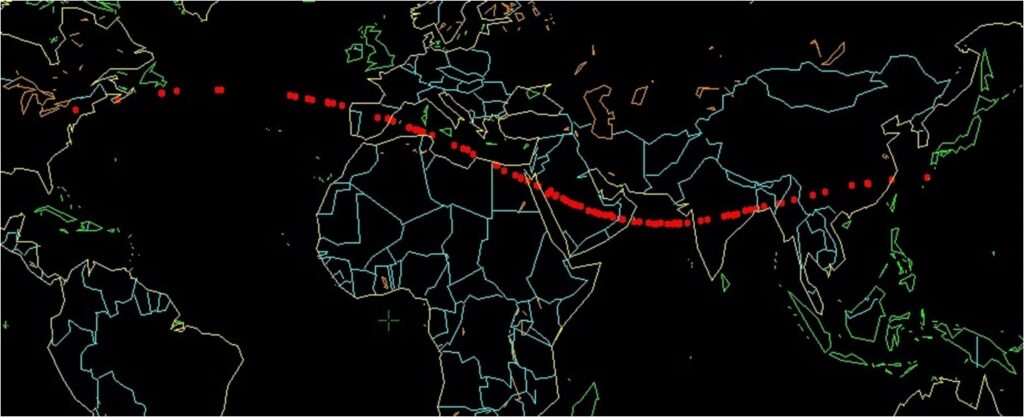
Background
As of 2020-11-16, the asteroid 2020 VV is listed on NASA/JPL Sentry (2.6% 2033-10-12.49) and NEODyS CLOMON2( 1.99% 2033-10-12.488) risk pages with a. Its Torino Scale over the next 100 years is 0(No Hazard). Its Palermo Technical Impact Hazard Scale has it below background risk i.e., there is a great risk from other asteroids before 2033-10-12.488. For more information on risk, pages see See Jon Giorgini’s “Understanding Risk Pages.”
How to find a Risk Corridor.
One of the programs available to the amateur observers of asteroids and comets is Find_Orb.[By Bill Gray] It is useful for calculating approximate ephemeris, determining approximate orbits, generating virtual asteroids, virtual impactors, predicting impact locations, and many other things. Find_Orb can generate an “asteroid risk corridor” with the help of Guide 9.1.[By Bill Gray]
As a test of concept, I obtained the observations of 2020 VV for the MPC. I loaded the observations into Find_Orb and had it run the Monte Carlo method all night. Find_orb generated the following files MPCOrb.dat, state.txt, and virtual.txt. These files had orbits for 7,240 virtual asteroids[VAs] 100 were virtual impactors[VIs]( about 1.4%). For each, there is a date, time, longitude, and latitude. I place a copy of the virtual.txt file in the Guide directory along with a copy of impact.tdf.(Project Pluto)
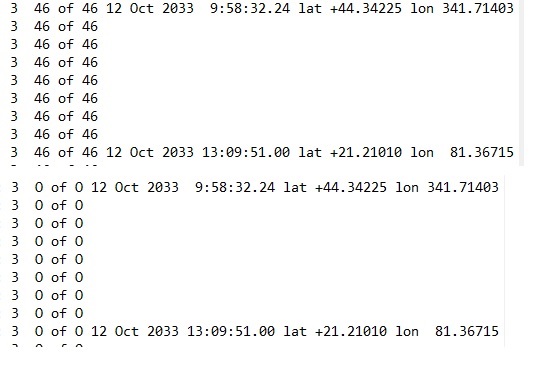
Then Guide generated a map of an asteroid risk corridor[ where the line of variation (LOV) crosses the Earth].
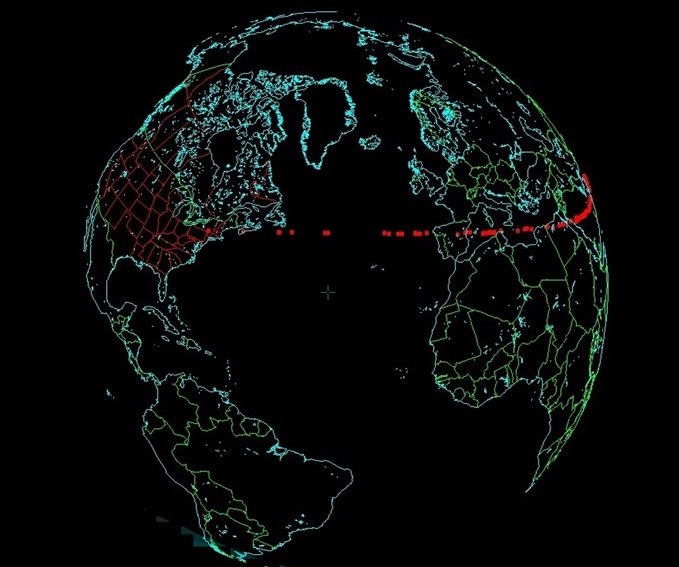
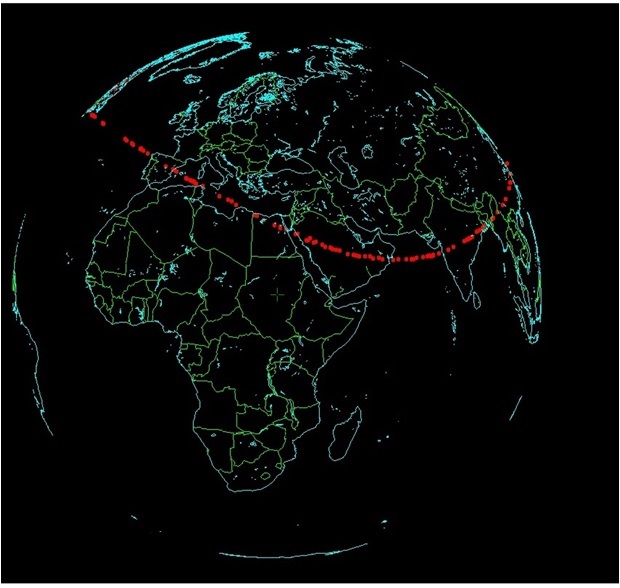
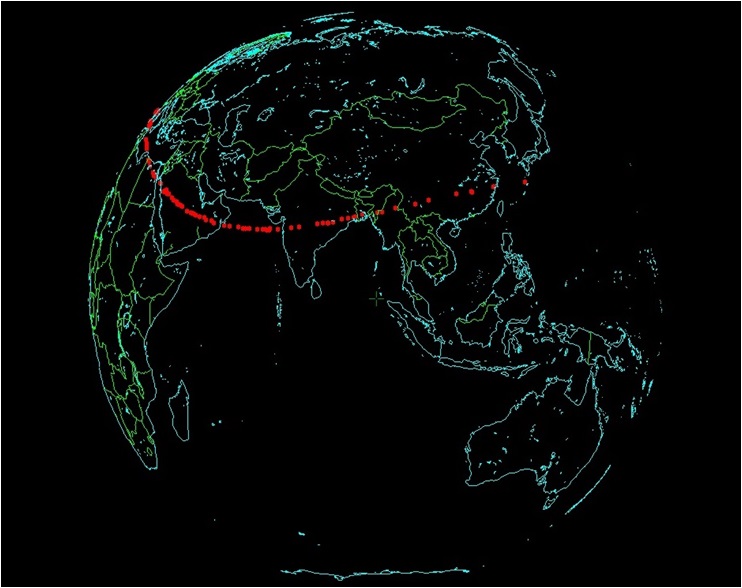
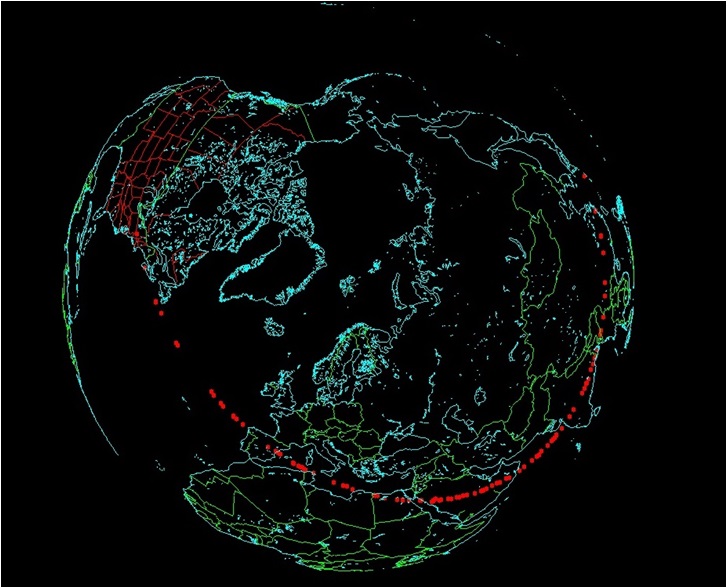
Here is a file 2020VV-VAs-VIs.XLSX file(google Docs) with orbits for the VAs and VIs.
My Find_orb Setting
| Selecting perturbers | All |
| Epoch | 2033 Oct 11 |
| Monte Carlo noise | 1 |
| Physical model Include | Standard |
| Filler out | None |
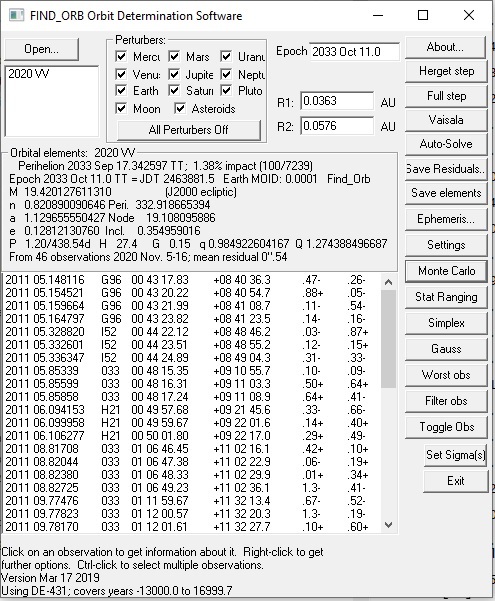
What makes virtual asteroids and virtual impactors useful
VAs and VIs are useful when comes precovery observation, looking at old images where it should have been, recovery when it returns, and sometimes there are negative observations to ruling out virtual impactors ( look where the VI would be powerful telescopes.
Find_Orb has been used Before for Predicting Impact Locations
Find_Orb had been used to predicting impact locations in the past here is how to using Find_orb and Guide9 To find the impact location of The NEO 2008 TC3.